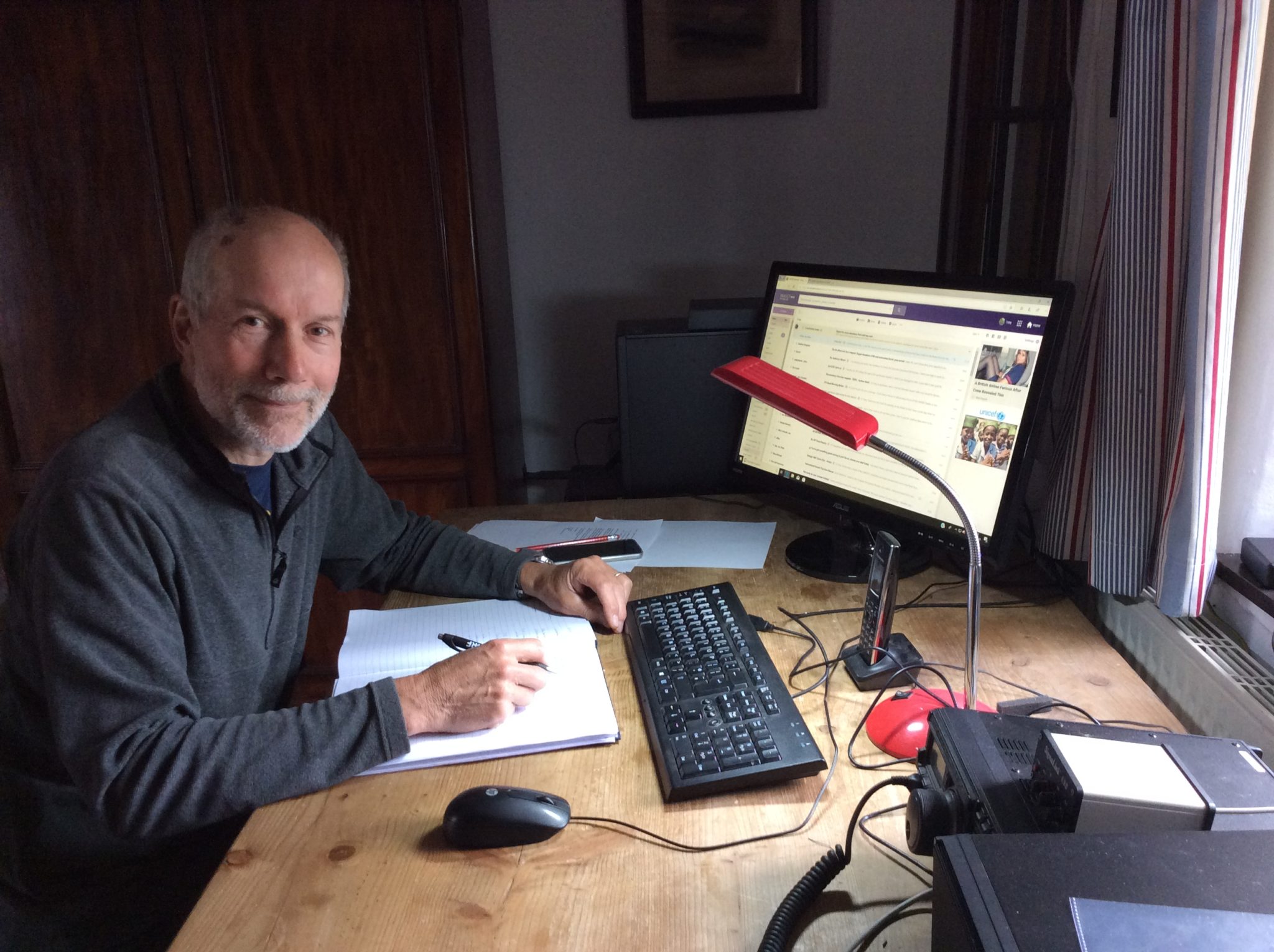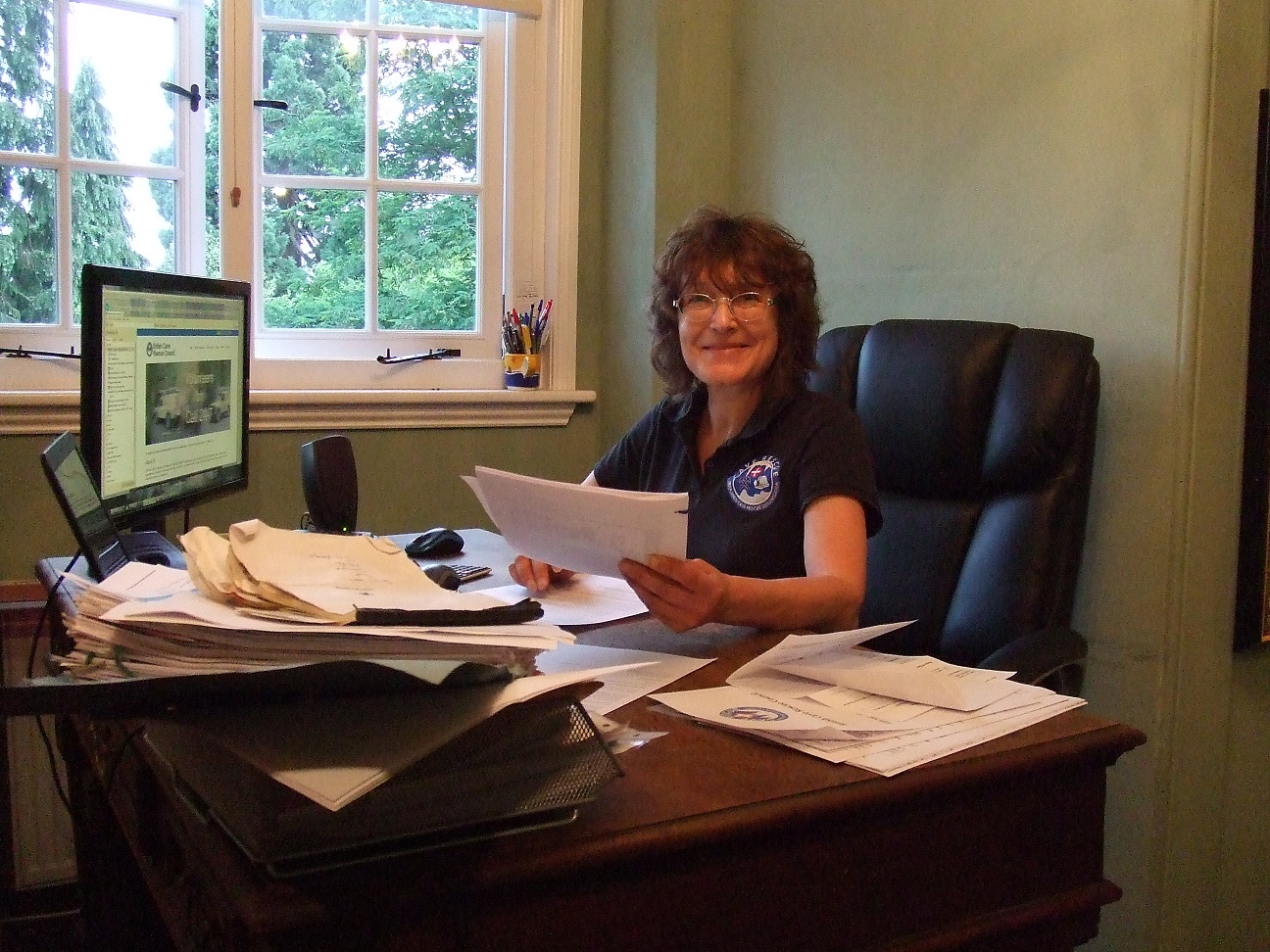
While the eyes of the world were on the divers taking part in the Thai cave rescue, an unsung band of volunteers were beavering away behind the scenes to ensure that the divers had all the kit and assistance they needed. Peter Dennis, chair of the British Cave Rescue Council, tells the backroom story to Linda Wilson and Sharon Wheeler.
One of the BCRC team assisting the Thai cave rescue found himself accompanied by a high-speed police escort so he could hurtle down the M4 to ensure vital kit caught an evening flight to Thailand.
The call had gone out for very specific positive pressure masks in children’s sizes. Neil Brock at Cardiff-based Bristol Channel Divers stepped in to help and the 3.5 hour clock started ticking for the equipment to make the 9.30pm flight from Heathrow to Thailand. South and Mid Wales Cave Rescue member Ali Garman collected the kit and expected to hand it over to police near the M4 before going home for his supper.
“It was important that the equipment went with a named passenger – in this case Josh Bratchley – rather than as freight where it ran the risk of getting lost,” said BCRC chairman Peter Dennis.
“Ali met the police with the intention of handing over the box of masks for them to transport. To his surprise when he reached the motorway, the police had been requested to clear the fast lane of the motorway for him and their question was: ‘How fast are you comfortable driving?’
“He ended up driving at speed along a large section of the M4. Ali had the drive of his life!”
Ali was just one of the backroom people who contributed to the success of the hazardous mission that was barely out of the news over the course of just over a fortnight. And the tiny British Cave Rescue Council (BCRC) found themselves coordinating the response from the UK – including dealing with the huge media interest.
“The boys went into the cave on Saturday June 23 and the first press report appeared the day after saying that they’d gone missing. There was a little bit of traffic online noting that a cave rescue had been initiated in Thailand. The first indication came on the Tuesday that it was beyond local rescue authorities and we received a formal request for assistance,” said Peter, who certainly had a baptism of fire after only taking over as BCRC chairman in April.
British caver Vernon Unsworth, who now lives in Thailand, was on-site and offered his help to the Thai authorities. He was surprised at how quickly the water levels had risen, and realised the situation was serious. The decision to call in specialist divers who were familiar with fast-flowing water and poor visibility was a pivotal moment. This led to a formal request landing on the BCRC’s desk via Rick Stanton and John Volanthen, two of the world’s most experienced cave divers.
“Transport, visas and insurance for the divers had to be fixed. This all happened on Tuesday June 26 and by 9.30pm that day Rick, John and Rob Harper were on a flight to Thailand. Rob had only just returned from a trip to there!” said Peter.
BCRC vice chairman Bill Whitehouse and Emma Porter, the BCRC secretary, found themselves sourcing equipment, filling in paperwork, sorting insurance and arranging diplomatic support for the divers. Derbyshire Cave Rescue provided HeyPhones for underground comms that were packaged at a depot in Buxton, but they had to reach Heathrow for the 9.30pm flight. Police provided a rapid response to get the kit to the flight.
“We had tremendous support from other emergency services willing to divert time and effort. It was a remarkable story of cooperation. We already had existing channels with police. Individual teams have good relations with local police forces – rescues always have to be initiated via police and we have to act on police incident numbers, partly because of insurance and partly because of protocol. So we have to have links with their control rooms,” said Peter.
“The Mountain Rescue England and Wales commercial insurer was willing to extend cover to use our existing UK Search and Rescue insurance policy in Thailand and added on medivac. If the rescuers were injured, medical evacuation would otherwise not have been covered. We had to have those sort of administrative niceties in place.”
“Originally we were dealing with the Thai police, then we received diplomatic support from the Foreign and Commonwealth office, the British Embassy in Bangkok and the Consular office in Chiang Rai province. Ben Svasti, the honorary consul there, was very helpful. Our costs were covered by the Thai government as we had to ensure we weren’t financially liable as we’re a small organisation with a small budget.”
By this stage other BCRC members had been drafted in. Jason Mallinson and Chris Jewell were the second pair of divers to fly out, later joined by Josh Bratchley, Connor Roe and Jim Warny. Emma Porter, the BCRC secretary and a member of Midlands CRO, had set up a comms link and was getting real-time messages through to Rick and later to the rest of the team. Shepton Mallet Caving Club member Martin Ellis, a regular explorer in Thailand, speaks Thai, which was invaluable. And BCRC assistant chair Gary Mitchell was in the Thailand control room liaising so the divers could just dive and concentrate on the rescue. It was at this stage that it became clear which key bits of kit were lacking, notably the positive pressure masks in children’s sizes. These were significant because they had to fit properly and so, if knocked, air would bubble out rather than water pour in.
Dealing with the huge media and public clamour became a major headache for Peter and his team when a mountain of text messages, emails and phone calls swamped the essential ops messages. “Our key role as the initial phases of the search commenced after John, Rick and Rob arrived was to try to protect them from undue distractions. They needed to rest as they were carrying out hazardous searches and laying guide lines in treacherous and unknown conditions.
“We had hundreds of media enquiries. The Derbyshire group put on Facebook about getting equipment to Heathrow, so they became the focus for messages and media interest. They were inundated – there were a million views to their Facebook page! It was far beyond any interest usually shown in caving. BCRC didn’t have a Facebook page at that point, so we were under pressure to set one up to provide information and to try to handle the intense interest in the whole story,” said Peter.

“We had an intermediate phase where we were issuing media briefings with named points of contact, but we quickly adapted to state a single generic contact so we weren’t distracted from the main focus. Tony Haigh, the BCRC communications officer, started triaging requests, which gave us a more orderly way of dealing with the media pressure. And it saved the same requests cascading to multiple people and causing extra work for hard-pressed BCRC officers and many individual rescue teams around the UK, especially those with any contact with the divers.
“We had a spike in traffic when the British divers went over, then after John’s highly publicised film when they found the boys. It was almost a frenzy and difficult to deal with because there was such euphoria. No one was asking ‘what do we do next’?

“The next spike was the rescue itself, with the boys being brought out of the cave and taken to hospital, and the final stage when the divers returned home. By then we had our system better organised. BCRC treasurer Heather Simpson was able to deal with a lot of the Facebook comments and was putting batch replies and thank yous up. Many were from Thai people wanting to express their thanks for the help these foreigners were giving to their boys.”
The team also had to field a large number of what Peter diplomatically described as leftfield ideas, all with their own theories as to how the boys could safely be brought out of the cave. But it had to be explained that ideas like long, wide diameter pipework, flexible enough to get through the awkward passage profile for the boys to crawl through, would just collapse and shrink-wrap them if they tried to get through it under the pressure of water. Even before Elon Musk weighed in with his mini submarine idea, many similar pods were described. The drill rig idea to reach the boys from above might have been practical in theory, said Peter, but given there were no roads through the jungle above ground or a precisely surveyed target underground, time was against them.
“We had to acknowledge that the ideas were sincerely motivated, so we had a number of stock answers. We politely acknowledged the messages, thanked them for their ideas and directed them to the Thai authorities as we were solely advising and assisting on the cave diving part. The divers received quite a few messages directly and could ignore them and focus on their difficult task as they knew we were picking them up,” said Peter.
Back in the UK, Emma Porter had become the most critical member of the team. She set up the main communications centre so she had live contact with Rick, the other rescue divers and later with the surface support team who went over for the final phase of the search and rescue operation.
One big issue faced by the BCRC was not offending the Thai authorities responsible for the rescue operation. BCRC’s legal advisor caver Toby Hamnett was drafted in to advise on what could or couldn’t be said at a very delicate stage in the rescue.
Peter explained: “He appreciated some of the difficulties in pressing too hard with the plan to bring out the boys by diving or by talking about the medical details when other seemingly less risky options appeared viable, since this risked offending the Thais. There was the critical time between finding the boys far inside the cave stranded on that ledge and the initiation of the diving op to bring them out. The Thai authorities didn’t want to take any risks. When other options closed down and became less and less likely, they then accepted the proposed dive rescue plan. We were obliged to recognise that we were only advising and supporting the dive rescue option of a much larger operation and we feared our divers being asked to go home if we pushed that plan too hard earlier in the rescue operation, with potentially catastrophic consequences for the stranded boys. Some very sensitive diplomatic work was needed there.
“With the help of Ben Svasti and Simon Lever, head of the political section at the British embassy in Bangkok, support from the Americans and careful discussion with the Thai rescue authorities in the control room, they were eventually won over in undertaking the risky op and putting their trust in John, Rick, Jason and Chris’s plan to dive them out, but it really was the only plan. They demonstrated they’d thought it through in very fine detail and history shows they judged it right. To repeat it with so many boys with so much that could go wrong in individual dives, we were considering the worst that two or three boys could have died during the dive out.”
The hardest part of the rescue was yet to come.
You can read part two of this story here.
Photographs courtesy of Peter Dennis
